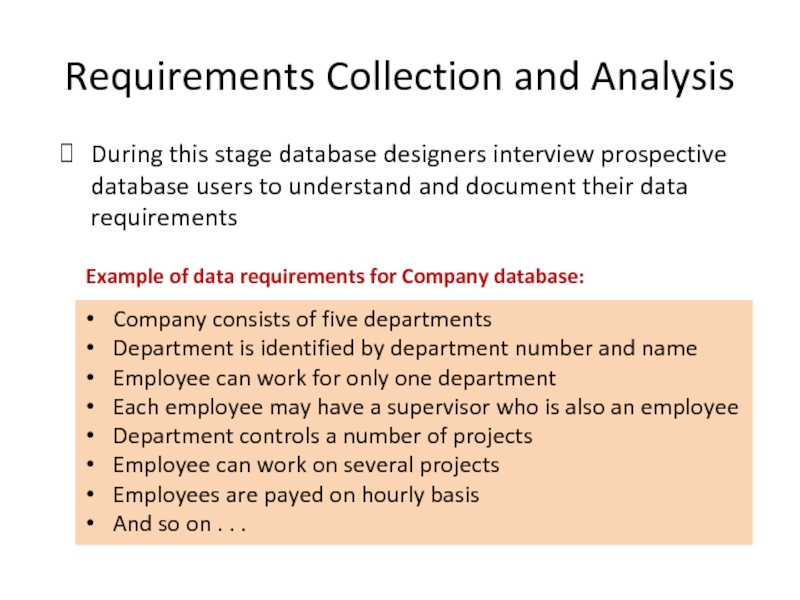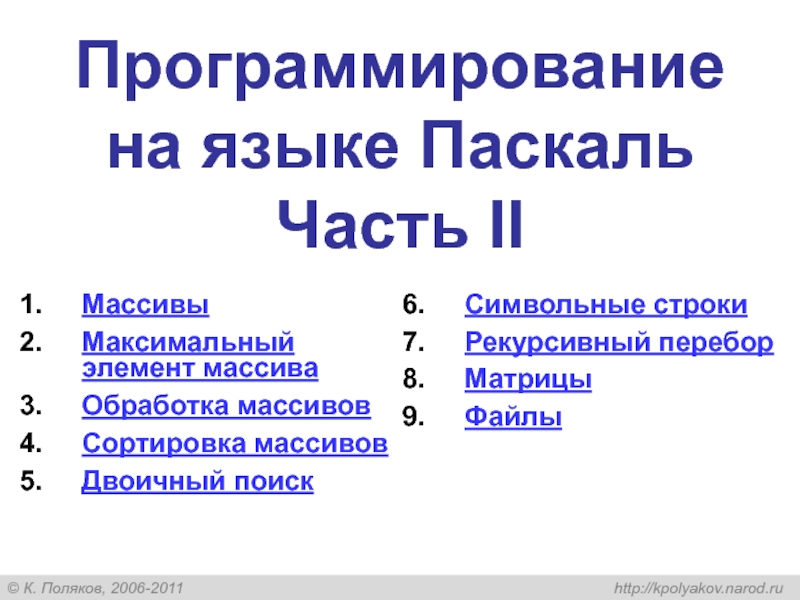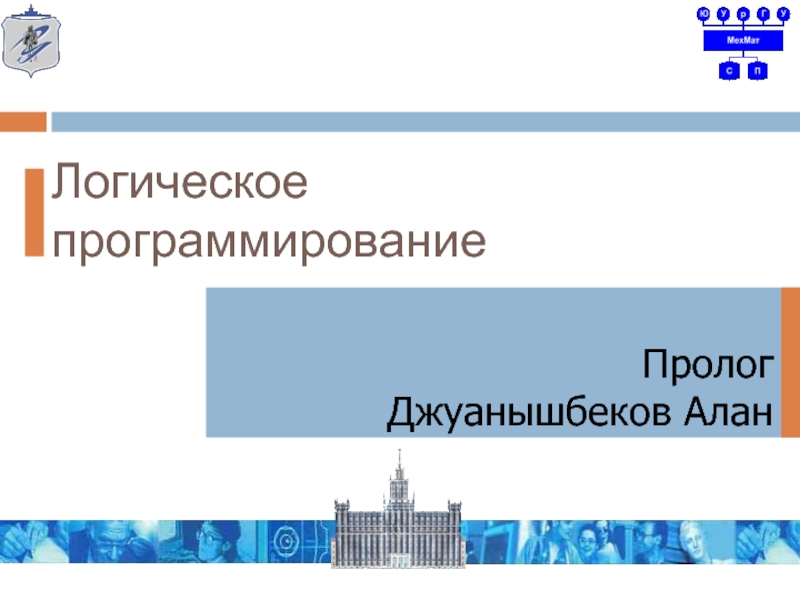- Главная
- Разное
- Дизайн
- Бизнес и предпринимательство
- Аналитика
- Образование
- Развлечения
- Красота и здоровье
- Финансы
- Государство
- Путешествия
- Спорт
- Недвижимость
- Армия
- Графика
- Культурология
- Еда и кулинария
- Лингвистика
- Английский язык
- Астрономия
- Алгебра
- Биология
- География
- Детские презентации
- Информатика
- История
- Литература
- Маркетинг
- Математика
- Медицина
- Менеджмент
- Музыка
- МХК
- Немецкий язык
- ОБЖ
- Обществознание
- Окружающий мир
- Педагогика
- Русский язык
- Технология
- Физика
- Философия
- Химия
- Шаблоны, картинки для презентаций
- Экология
- Экономика
- Юриспруденция
Analysis and Design of Data Systems. Entity Relationship Model. (Lecture 8) презентация
Содержание
- 1. Analysis and Design of Data Systems. Entity Relationship Model. (Lecture 8)
- 2. Phases of Database Design Miniworld Requirements Collection
- 3. Phases of Database Design Miniworld Requirements Collection
- 4. Requirements Collection and Analysis During this stage
- 5. Conceptual Database Design Conceptual database design involves
- 6. Conceptual Database Schema As a result of
- 7. Entity-Relationship Model
- 8. Entity-Relationship Model Entity-Relationship diagram models data
- 9. Examples of Entities Types Examples of a
- 10. Attributes Each entity type has attributes —
- 11. Entity Types and Entity Sets An
- 12. Types of Attributes Several types of attributes
- 13. Simple vs. Composite Attributes EMPLOYEE Name Address
- 14. Another example of a composite attribute
- 15. Single-valued vs. multivalued attributes An attribute can
- 16. Stored vs. Derived Attributes STUDENT Name Address
- 17. Key Attributes Entity types usually have one
- 18. Example: Requirements Collection and Analysis “COMPANY” An
- 19. Example: Requirements Collection and Analysis “COMPANY” An
- 20. Example: Requirements Collection and Analysis “COMPANY” An
- 21. Example: Requirements Collection and Analysis “COMPANY” An
- 22. Identifying Relationships Whenever an attribute of one
- 23. Understanding Relationships Role name signifies the
- 24. Representation in ER Schema
- 25. Recursive Relationships EMPLOYEE In some
- 26. Representation in ER Schema Supervisor Supervisee
- 27. Degree of a Relationship The degree of
- 28. Degree of a Relationship SUPPLY ralationship is
- 29. Constraints on Binary Realtionships These constraints are
- 30. Cardinality Ratios for Binary Relationships The
- 31. Example of 1:1 relationship Miniworld
- 32. Example of M:N relationship Miniworld
- 33. Representation in ER Schema
- 34. Participation constraints There are two types of
- 35. Representation in ER Schema
- 36. Attributes of Relationships
- 37. Weak Entity Types Entity types that do
Слайд 1IE301
Analysis and Design of Data Systems
Lecture 8
Entity Relationship Model
Aram Keryan
September
Слайд 2Phases of Database Design
Miniworld
Requirements Collection and Analysis
Conceptual Design
Relational Database Schema
Relational DBMS
Слайд 3Phases of Database Design
Miniworld
Requirements Collection and Analysis
Conceptual Design
Relational Database Schema
Relational DBMS
We
Слайд 4Requirements Collection and Analysis
During this stage database designers interview prospective database
Company consists of five departments
Department is identified by department number and name
Employee can work for only one department
Each employee may have a supervisor who is also an employee
Department controls a number of projects
Employee can work on several projects
Employees are payed on hourly basis
And so on . . .
Example of data requirements for Company database:
Слайд 5Conceptual Database Design
Conceptual database design involves modelling the collected information at
Reasons for Conceptual Modelling:
Independent of DBMS
Allows for easy communication between end-users and developers
Has a clear method to convert from high-level model to relational model
Conceptual schema is a permanent description of the database requirements
Слайд 6Conceptual Database Schema
As a result of using High-Level Conceptual Data Model
Conceptual Schema includes detailed description of the entity types, relationships, and constraints
Conceptual Schema reflects all the data requirements collected during the initial stage
Слайд 8
Entity-Relationship Model
Entity-Relationship diagram models data as entities, attributes and relationships
is a
is a thing about which we store data
Entity
e.g. a person, a bank account, a building
is a thing in the real world with independent existence
Entity is a basic object that ER model represents
Слайд 9Examples of Entities Types
Examples of a person entity would be EMPLOYEE,
Examples of a place entity would be STATE or COUNTRY
Examples of an object entity would be BUILDING, AUTO, or PRODUCT
An example of an event entity would be SALES, RETURNS, or REGISTRATION
An example of a concept entity would be ACCOUNT or DEPARTMENT, UNIVERSITY COURSE
Слайд 10Attributes
Each entity type has attributes — the particular properties that describe
e.g., EMPLOYEE entity type may be described by the employee’s name, age, address, salary, and job
EMPLOYEE
Name
Address
Salary
Job
Age
ENTITY
Attribute
Attribute
Attribute
Слайд 11
Entity Types and Entity Sets
An entity type defines a collection (or
Each entity type is described by its name and attributes
An entity set is the collection of all entities of a particular entity type in the database at any point in time
Entity sets usually have the same name as entity types
CAR
Year
Model
Make
Entity Type
Entity Set
(Toyota, Camry, 2005)
(Toyota, Yaris, 2009)
(Nissan, Skyline, 2010)
(Porsche, Cayenne, 2006)
…………………..
Слайд 12Types of Attributes
Several types of attributes occur in the ER model:
simple (atomic) versus composite
Single-valued versus multi-valued
stored versus derived
Слайд 13Simple vs. Composite Attributes
EMPLOYEE
Name
Address
Salary
Job
Age
Street_
address
Zip
State
City
Apartment_number
Street
Number
“Address” is a composite attribute – it can
Simple or atomic attributes are not divisible.
Слайд 15Single-valued vs. multivalued attributes
An attribute can have a set of values
CAR
Year
Model
Color
Make
Car can be of one color or can be of multi-color
STUDENT
Name
Degree
Address
B.date
A student can have one or several degrees
Слайд 16Stored vs. Derived Attributes
STUDENT
Name
Address
B.date
Age
I some cases, two (or more) attribute values
“Age” and “B.date” are related since for a particular student his/her age can be determined from the current date and his/her birth date.
“Age” is called a derived attribute
“B.date” is called a stored attribute
Слайд 17Key Attributes
Entity types usually have one or more attributes whose values
Such an attribute is called a key attribute, and its values can be used to identify each entity uniquely
Слайд 18Example: Requirements Collection and Analysis
“COMPANY”
An entity type DEPARTMENT with attributes Name,
Слайд 19Example: Requirements Collection and Analysis
“COMPANY”
An entity type PROJECT with attributes Name,
Слайд 20Example: Requirements Collection and Analysis
“COMPANY”
An entity type EMPLOYEE with attributes Name,
Birth_date, Department, and Supervisor. Both Name and Address may be
composite attributes; however, this was not specified in the requirements.
We must go back to the users to see if any of them will refer to the individual
components of Name—First_name, Middle_initial, Last_name—or of Address. In our example, Name is modeled as a composite attribute, whereas Address is
not, presumably after consultation with the users.
Слайд 21Example: Requirements Collection and Analysis
“COMPANY”
An entity type DEPENDENT with attributes Employee,
Слайд 22Identifying Relationships
Whenever an attribute of one entity type refers to another
Слайд 23
Understanding Relationships
Role name signifies the role that a participating entity from
Role
employee
worker
Role
department
employer
Слайд 25Recursive Relationships
EMPLOYEE
In some cases an entity type participates more then once
Such relationships are called recursive
Each instance of EMPLOYEE type plays one of two roles: supervisor(1) or employee (2)
Слайд 27Degree of a Relationship
The degree of a relationship is the number
WORKS_FOR ralationship is of degree two
A relationship type of degree two is called binary
Слайд 28Degree of a Relationship
SUPPLY ralationship is of degree three
A relationship type
If N entity types participate in a relationship then such relationship is of degree N
Слайд 29Constraints on Binary Realtionships
These constraints are determined from the miniworld situation
Two main types of binary relationship constraints:
Participation
Cardinaliry Ratio
Structural Constraints
and
Слайд 30Cardinality Ratios for
Binary Relationships
The cardinality ratio for a binary relationship
For WORKS_FOR relationship
DEPARTMENTE : EMPLOYEE
cardinality ratio is 1:N
Possible cardinality ratios for binary relationships are:
1:1 (one to one)
1:N (one to many)
M:N (many to many)
Слайд 31Example of 1:1 relationship
Miniworld rules
Employee can manage one department
Department can have one manager only
Слайд 32Example of M:N relationship
Miniworld rules
Employee can work on several
Project can have several employees
Слайд 34Participation constraints
There are two types of participation constraints—total and partial
Participation constraint
Participation of DEPARTMENT in MANAGES is called total participation, meaning that every department must be managed by one employee.
Participation of EMPLOYEE in MANAGES is called partial participation, meaning that a employee may or may not be a manager of a department.
Слайд 37Weak Entity Types
Entity types that do not have key attributes of
In contrast, those entity types that do have a key attribute are called strong entity types
A weak entity type always has a total participation constraint with respect to its identifying relationship because a weak entity cannot be identified without an owner entity
A weak entity type normally has a partial key, which is the attribute that can uniquely identify weak entities that are related to the same owner entity











































